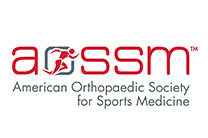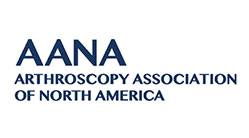What is Sports Hernia Repair?
Sports hernia repair is a surgical procedure performed to treat a sports hernia, also known as athletic pubalgia. A sports hernia is a condition characterized by chronic pain due to any strain or damage to the soft tissues in the pelvic and groin region.
Which Sports have an Increased Risk of Causing Sports Hernias?
This condition is commonly seen in sports that involve vigorous movements of the pelvis such as twisting or a sudden change in direction. They include:
- Football
- Soccer
- Basketball
- Ice Hockey
- Tennis
- Hurdling
Indications for Sports Hernia Repair
Sports hernia repair is mainly indicated to treat pain or damage in the groin or pelvic area that is not relieved with conservative care with patients complaining of persistent symptoms including:
- Unilateral groin pain
- Tenderness in the thigh or lower abdomen
- Pain that increases when moving or twisting
Preparation for Sports Hernia Repair
General preparatory methods for sports hernia repair include:
- A thorough examination by your doctor to check for any medical issues before the surgery.
- Your doctor will review your medical history and symptoms, based on this you may need to undergo certain tests to detect any abnormalities.
- Inform your doctor if you are allergic to any medications, latex, or anesthesia.
- Inform your doctor about the medications and supplements that you take.
- Stop eating and drinking from midnight the day of the surgery.
- Do not stop any medications unless recommended by your doctor.
- Shower in the morning before coming for the surgery.
- You need to sign an informed consent form that will be provided after the pros and cons of the surgery have been explained.
Procedure for Sports Hernia Repair
Sports hernia repair is usually recommended by your doctor if conservative methods fail to improve the symptoms. This involves repairing the torn abdomen and groin tissues using internal sutures. Some of the most common types of repair techniques include:
- Open Surgery: In this technique, a large incision is made in the groin area that helps your surgeon to view the internal structures properly. Your surgeon will dissect the structures in the inguinal area to access the injury site. The torn tissues are then sutured together or a tissue graft or a piece of mesh is used to reinforce the area.
- Laparoscopic Hernia Repair: This is a minimally invasive surgical procedure performed using a laparoscope, a thin fiber-optic instrument with a camera and lens attached to it. Your doctor will make small incisions through which a camera and tiny instruments are inserted into the abdomen to view and repair the torn muscles and reinforce the area with a piece of mesh that is sutured in place.
Post-operative Care and Recovery for Sports Hernia Repair
Post-operative care and recovery for sports hernia include:
- As this is can be done as an outpatient procedure, you may be allowed to go home the same day of the procedure or after an overnight stay. Arrange for someone to drive you home after surgery.
- Your doctor will recommend you avoid strenuous activities for some time and provide you with a rehabilitation plan to recover your strength and endurance gradually.
- You should use an ice pack on the wound to reduce pain and swelling.
- Recovery will take about 3-6 weeks. Return to sports may require 6-12 weeks.











